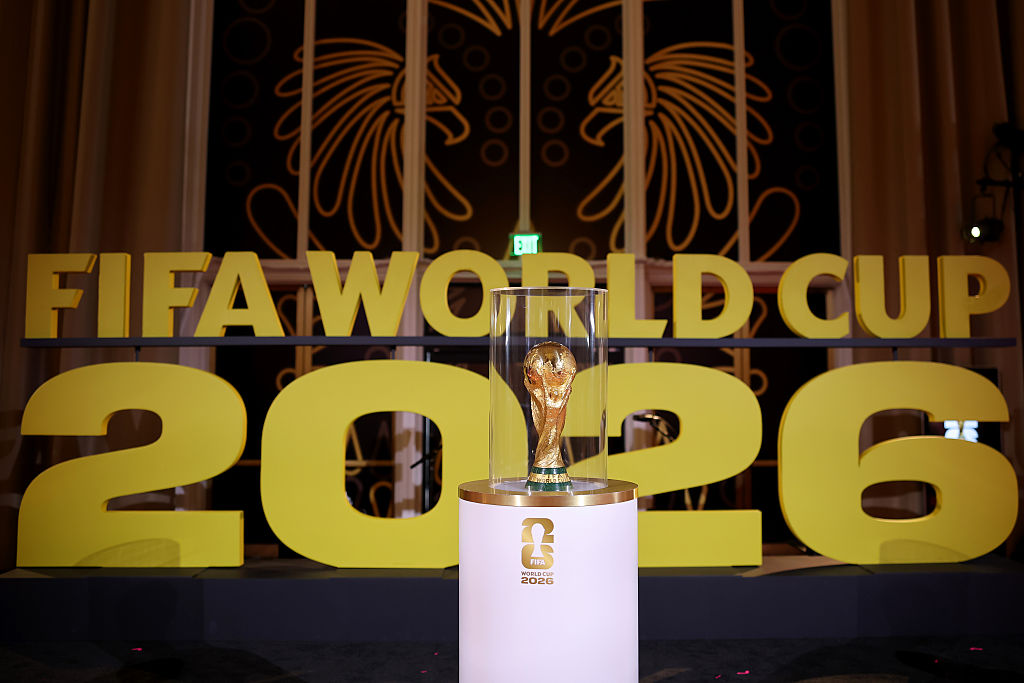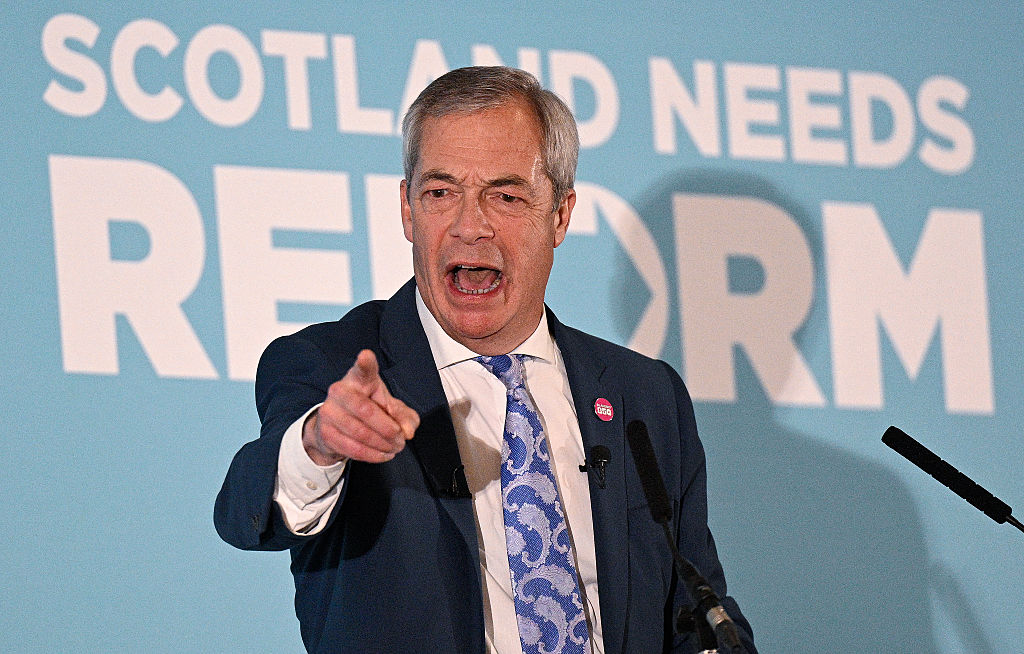The true cost of negative interest rates
Sweden's deposit rate recently turned negative. Some analysts say that's just what we need to stall the depression. But that's dangerous talk, says Adrian Ash.
$200 would hardly buy you a Mrrum shelf unit from Ikea, even if you did pay in cash rather than charge it (only in white; requires assembly). It totals only 0.25% annual interest on 48 million Krona over the last six days, after all.
Already running to SEK1,643 since last Thursday's decision, the true cost of Sweden's sub-zero deposit rate might start to add up. Because this brave step into a new world of negativity is precisely what academics and policy-wonks everywhere think the world needs to stall the depression.
And the minus 0.25% offered on Riksbank deposits in Stockholm has made the impossible real.
MoneyWeek
Subscribe to MoneyWeek today and get your first six magazine issues absolutely FREE

Sign up to Money Morning
Don't miss the latest investment and personal finances news, market analysis, plus money-saving tips with our free twice-daily newsletter
Don't miss the latest investment and personal finances news, market analysis, plus money-saving tips with our free twice-daily newsletter
"I agree with Greg Mankiw that it is time for central banks to stop pretending that zero is the floor for nominal interest rates," wrote former Bank of England executive Willem Buiter in the Financial Times this spring. Professor of economics at Harvard, Mankiw had asked in the New York Times"Why shouldn't the Fed just keep cutting interest rates? Why not lower the target interest rate to, say, negative 3 per cent?"
Why not indeed? Oh sure, "If the economy is faced with a recession when inflation is zero, the monetary authority is constrained [by] the fact that the nominal short-term interest rate cannot be lowered below zero the zero interest rate bound," as a Fed paper [pdf] put it in 1998, back when Japan's deflation made a neat lab experiment for Washington's PhD-crazed policy dreamers.
But "Early mathematicians thought that the idea of negative numbers was absurd," Mankiw went on this April, showing just how much smarter we've all become since the end of last decade, let alone 2,000 years ago. And "Today, these numbers are commonplace." Hence the calls from even mainstream investors for sub-zero rates, gathering pace since the start of '09.
"At that [negative 3%] interest rate," reckons Mankiw at Harvard, "you could borrow and spend $100 and repay $97 next year. This opportunity would surely generate more borrowing and aggregate demand."
Negative 3% rates would surely mean debtors didn't get chance, however. Because creditors would receive only $97 for every $100 they lent. Which would leave prospective debtors wince, slap forehead with no-one to borrow from.
"I think that most people would choose to invest in another country where savings wouldn't lose 3% per annum," as Dr.Marc Faber noted in last month's Gloom, Boom & Doom Report. Or as John Maynard Keynes himself put it seven decades ago, "A long series of substitutes would step into [domestic saving's] shoes foreign money, jewellery, the precious metals generally, and so forth..."
The patron saint of nailing savers to redeem the over-indebted and nemesis of that "barbarous relic" Gold Bullion Keynes thus set about finding other ways to stiff the prudent in favor of borrowers. (His euthanasia of the rentier was far more politically charged in the 1930s than its tinkle suggests today, not least amongst his upper-class chums sitting pretty in consols and gilts.) In especial, the big danger for any such policy is that savers would just hoard cash at home instead, maintaining its nominal tally rather than enduring a loss at the bank.
The happy event of constant inflation was unknown as yet, remember. A loss of real purchasing power under the mattress only happened to reckless foreigners. Earning a yield on bank savings was, in the first-half of the 20th century, the natural order of things, rather than the necessity it became on the back nine holes as the cost of living rose without ceasing.
Hence the 2% rates set by the Bank of England in 1931 and held there for more than two decades. Maintained above zero (barbarous fools!) it was "thrown in the bin" as money historian Glyn Davis once put it. This attempt to appease deflation would be matched only by Chamberlain taking tea with Hitler in Munich.
Whereas today...?
"The world is awash in money and the incentive to borrow is huge," notes former diplomat and M&A specialist Edward Harrison at the CreditWriteDowns blog.
"So, is the Swedish announcement qualitatively different? On some level, it is not." Which is true. BullionVault confirmed today in a call to Sweden's central bank that the negative rate of 0.25% will only apply to money held on its deposit facility by 'monetary policy counterparts'. Ahead of last week's decision, those banking institutions chose to keep a measly 48 million Krone ($6m) with the Riksbank. They've not lent it more than SEK50m through that facility since the start of the year.
And just wait until Friday to see how much they left on deposit after last week's decision!
"Nevertheless," CreditWriteDowns goes on, "it is the [world's] most aggressive policy and the fact that they are charging negative interest rates for deposits is unprecedented. This does make events in Sweden something to watch."
How did Sweden get to make history and break "the zero bound" before anyone else? First, like a high-performance auto from Saab handed to Swedish ownership by GM last month, incidentally Riksbank policy runs on a smooth and relentless engine. This unfailing machine sets the deposit rate precisely 0.5% below the repurchase rate for loans using government bonds as security. That, in turn, is 0.5% below the central-bank's lending rate.
So with the lending rate down to 0.75% and the repo rate cut to 0.25%, the deposit facility must pay 0.25% less than zero.
Secondly, the Swedish economy is a mess, forecast to shrink by 5% or more in 2009 with deflation in wages, housing and shop prices pretty much guaranteed. So third, and most crucially, the blue-sky thinkers of Scandinavian policy got their chance to huff and puff at all those dark clouds of depression.
Indeed, deputy governor Lars Svensson a colleague of Ben Bernanke's at Princeton and advocate of Credibly Reckless Inflation asked for a reservation against last week's decision to be noted. Because he wanted the main policy rate, the repo rate, cut to zero instead of 0.25%. He wanted it left at zero for the next 12 months, too. Which would have meant a negative 0.5% deposit rate at the Riksbank likely to raise more press and academic attention than the paltry coverage given to the 0.25% default agreed in Stockholm.
"I know the Riksbank's move is just a tiny step," gushes one adoring US academic, "but so far as I know this is the first time any real world central bank has adopted the proposal we have been discussing on this blog. [Don't you love that use of 'real'...?] And Lars Svensson is on the cutting edge of macro, [so] if he was behind this decision it bodes well for the future acceptability of the negative interest on reserves concept."
And it's here, we guess, that the absurd becomes livid in Washington, if not London, Frankfurt or Tokyo. Because the Federal Reserve, as you may recall, made much hoo-ha in late 2008 of starting to pay interest on excess commercial banking reserves. The apparent aim, back then, was to encourage US banks to keep excess cash with the Fed over and above the legally mandated minimum thus ensuring "efficiency" by enabling the banks to lend more into the economy. It's underpinned by that extra cash at the central bank, right?
Furthermore, the opportunity of paying a little extra interest on those reserves over and above short-term rates in the market would encourage excess cash to flow back to the Fed when Great Depression 2.0 is over, and Ben Bernanke gets round to writing the last chapter of his 1930s' history live, in real time.
But that's a long way off yet, as stock investors and even Gold Prices seem to be signaling. "Reserves created by the Fed have increased by a staggering $858 billion in the 12 months ended May," notes Paul Kasriel at the Northern Trust, while "excess reserves on the books of depository institutions have increased by almost as much, $842 billion." All told, therefore, some $1.7 trillion is sitting doing nothing when it could be losing value through the magic of negative rates of interest.
Could that be the next gambit? Hell, add a tweak or two to the new banking regulations, and it could become illegal not to lend money forced on a bank by the Fed! "If all of this seems too outlandish," as Harvard professor Greg Mankiw puts it, just go back and re-read his pitch in the New York Times. Because little should surprise us except the willingness of central bankers and the academics advising them all jollied up on a merry-go-round of university-to-official tenure and back to do anything, whatever it takes, to force you to stop saving and keep spending like it's 2006.
"Liquidity is ample, even excessive. Capital is scarce," says Willem Buiter, ex-Bank of England policy-wonk and now committed FT columnist. "A panoply of central bank and government financial interventions...has not done enough to get [the banks] lending again on any scale to the household and non-financial enterprise sector."
So hey! If low-to-zero rates of interest aren't working, maybe negative rates of interest will...?
Wince, slap forehead. Back to the lab.
Adrian Ash is editor of Gold News and head of research at BullionVault
Get the latest financial news, insights and expert analysis from our award-winning MoneyWeek team, to help you understand what really matters when it comes to your finances.
Adrian has written all things gold related from if it’s worth buying, what the real price of gold should be and what’s the point of gold for MoneyWeek. He has also written for other leading money titles on his gold expertise including Business Insider, Forbes, City A.M, Yahoo Finance and What Investment Magazine. Now Adrian is head of the research desk at BullionVault, a physical market for gold and silver for private investors online.
-
 MoneyWeek news quiz: How much will a 2026 FIFA World Cup final ticket cost?
MoneyWeek news quiz: How much will a 2026 FIFA World Cup final ticket cost?Quiz The 2026 World Cup, Netflix, and the cost of care all made headlines this week. How closely were you following this week’s top stories?
-
 Christopher Harborne: Reform UK donor and crypto billionaire
Christopher Harborne: Reform UK donor and crypto billionaireChristopher Harborne came into the spotlight when it emerged he had given £9 million to Nigel Farage's Reform UK. How did he make his millions?